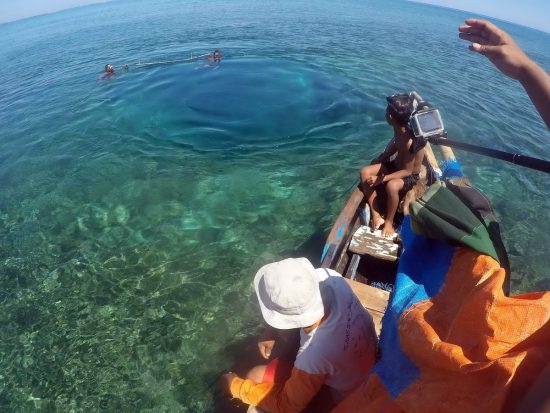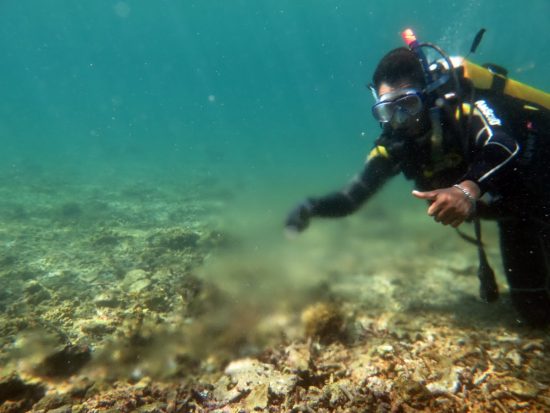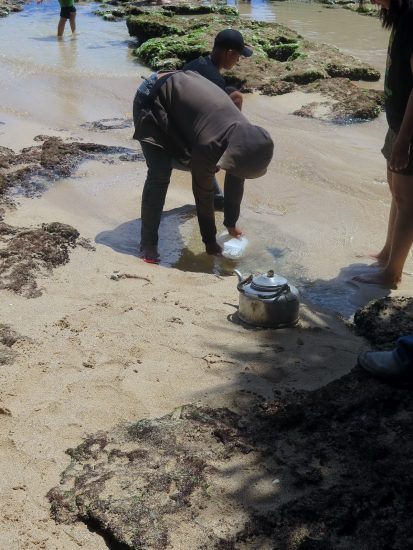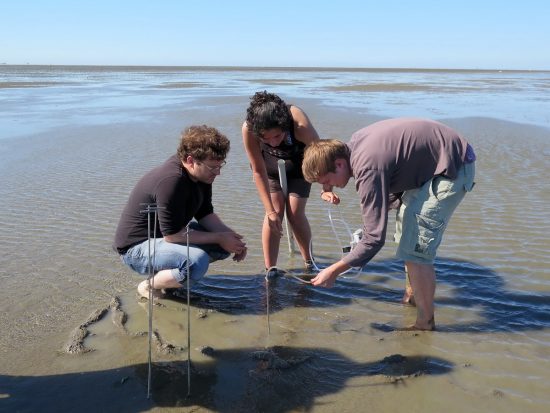





The invisible water resource
In the scientific journal Earth Science Reviews, geologists Nils Moosdorf and Till Oehler from the Leibniz Center for Tropical Marine Research (ZMT) report on a particular natural phenomenon that has so far received little attention in science: submarine groundwater sources. Their usefulness and cultural value are considerable for many coastal dwellers.
Olhos de Agua (translated as “water eyes”) is a popular resort in Algarve, Portugal. The name is derived from a particular natural phenomenon: On the beach, at low tide, freshwater pours out continuously on the beach at low tide.
Freshwater also bubbles in the North Sea, in the Wadden area near Sahlenburg at the southern end of the beach, for instance. In both cases, they are sea-level groundwater, which has been paved by rocks or sand layers, and flows along the slope to the sea. There, it often seeps out near the water line, but can also be released at depths of up to 50 meters, as is the case in front of the Croatian island of Braç. Such sources are found mainly in karstic coastal areas with porous limestone.
Submarine freshwater sources are widespread, but they are easily overlooked. They have so far received little attention from the scientific community. "Without good reason," commented Moosdorf, a geologist at ZMT.
"According to estimates so far, these specific sources account for up to 10% of the water that is introduced into our planet by the rivers."
He is researching the importance of this water resource for humans and coastal ecosystems.
Together with his team, he went on a search for the underwater freshwater springs, and found them – in historical writings, travel guides, dive magazines, newspaper articles and oral traditions from all over the world.
The springs were often used as drinking water, as in Bahrain in the Persian Gulf. That "a person can dive there with a drinking tube into the sea and fill it with fresh drinking water" has been reported in documents from the 15th century.
In island states with water scarcity, such as Tahiti or Fiji, the populace still reverts to such sources when the water supply collapses. Often, the precious rainwater is collected in cisterns and is only available for drinking; if water is needed for washing, one gets it from freshwater sources on the beach.
"The sources are mostly particularly nutrient-rich and attract a lot of fish like the 'Wonky holes' off Australia. These are therefore hotspots for fishermen and divers,” said Moosdorf. "In Japan, oysters from aquaculture grow very well near such sources."
In Peru, water is still being pumped from submarine sources into trucks and distributed on land; in Greece, it is used for the irrigation of fields. In the 1990s, Florida planned the exploitation of submarine freshwater fields on a grand scale, as pipeline water became scarce in the metropolis region of Miami. One of the larger springs there is currently delivering about 40 m³ fresh water per second.
"Freshwater, which simply bubbles in the sea, has something magical and inspires the imagination of the people," said Moosdorf. "In many places, submarine sources of groundwater have a great sense of meaning and culture for people. In ancient Greece, for example, horses were sacrificed to the sea god Poseidon at Argos."
Moosdorf also reported that in Bali, the Hindu sea temple Tanah Lot was built on a freshwater source. Every year, two million people make their way there to be blessed with the water.
However, despite its important role, submarine sources are now under threat; with wells on land hastening their extinction. Other places contaminate the spring water with untreated sewage and residues from agriculture. This affects not only the people who use the sources for drinking, but also coastal ecosystems such as coral reefs growing near them. In addition, the sea level rise will also influence the hydraulic conditions for the preservation of submarine groundwater sources.
"Only upon closer inspection is the unique value of this invisible water resource revealed, so scientists and coastal managers should always keep them in mind," Moosdorf commented.
For further Information see: Moosdorf, N., and T. Oehler: "Societal use of fresh submarine groundwater discharge: An overlooked water resource." Earth-Science Reviews (2017).
 Herbert
Herbert 20th July 2017
20th July 2017